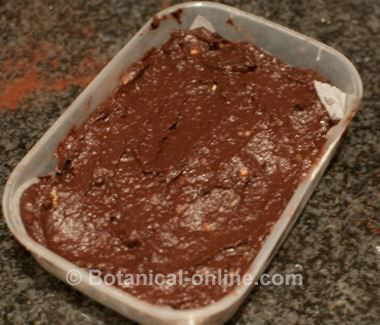Contents
Citrus plants
CHARACTERISTICS OF CITRUS
What are citrus?
Citrus are the best know species within the Rutaceae family plants, a genus of plants where many know fruits are included, such as oranges (Citrus sinensis), Oval Kumquat (Citrus japonica), bitter oranges (Citrus aurantium), mandarins (Citrus reticulata), lemons (Citrus limon), grapefruits (Citrus paradisi), limes (Citrus aurantifolia), citrons (Citrus medica) and kumquats (Citrus fortunella = Fortunella margarita)
Citrus are trees or evergreen shrubs whose height can vary between 5 and 16 m while the present species are grown as dwarf varieties that allow to achieve agricultural tasks more easily and with a greater productivity.
Stems erect, greenish, with branches provided with spines. The flowers are very fragrant, often gathered in inflorescences, usually in the form of corymbs though, more rarely, they appear in isolation. They have five petals and numerous stamens.
Citrus are noted for their large fleshy fruits with thick skin. They are hesperidiums with a typical size between 3 and 10 cm in length, although there are species that reach 30.
They bloom in spring and fruits are collected from autumn to winter.

Photo of citrus: 1 – Orange; 2 -Grapefruit; 3- Tangerine; 4- lemon
Citrus growing
They are grown on most occasions for fruit production, although, because of the beauty of its evergreen leaves and the scent of the flowers, we can find gardening cultivated varieties, which are usually planted in large parks or isolated species in gardens. Do not forget also the many greenhouses arranged in many cities in cold countries and the current tendency to grow them inside as bonsai.
Citrus cultivation requires warm weather and abundant moisture, making it necessary to water them frequently. Although they can withstand temperatures below º C, they do not support continuous frost and the fruits produced by resistant varieties in cold areas have very low quality.
The more resistant species, the trifoliate orange (Poncirus trifoliata), can hold up to – 20 º C and it is not edible, so it is used as a rootstock on which weaker species to cold are grafted. An example of this is the citranges that is a cross between this citrus and the sweet orange. The lemon trees grafted on trifoliate orange are the most productive ones resistant to frost.
At the other extreme is the lime that is the lest enduring citrus to cold so that it can only be grown in tropical and subtropical climates. As a curiosity, we should mention that the fruits of this tree, when exposed to colder temperatures, they are no longer green and become yellow which has come to show that citrus need a period of cold weather so that their fruits can “ripen”.
Besides abundant moisture, citrus requires well-drained soil, shredded, slightly acidic and rich in nitrogen and potassium. They must be located in a sunny place, sheltered from the wind.
Trees are very prone to disease, especially of viral nature, among which the tristeza virus, gummosis, psoriasis, bold, etc.. They are also prone to attack by many pests (mites, birds, aphids, thrips, lice, etc..) All this requires care and prevention that compel farmers to apply continued and numerous preventive and curative treatments. Equally sensitive is their reproduction, that has to be done by grafting on a pattern.

Photo of lemons in the tree
Origin of citrus
The origin of citrus focuses on tropical and subtropical regions of Asia, from where they have gradually been introduced in all regions of the world with a warm climate. The main producing countries of the world are China, Spain, South Africa, Australia and the United States (California, Texas and Florida)
It is very difficult to determine how many original species within this genus there are because most of the time many of them are the result of many hybrid crosses between species, conducted during the early stages of cultivation in India and China. Many experts believe that there are only four original species (lime, grapefruit, citron and mandarin) and the rest are all hybrid species.
Of all the citrus fruits the largest one is the pummelo, pommelo, or shaddock (Citrus maxima), a little known tree, growing in South East Asia – Japan, South China, Thailand, Indonesia… – The fruit of this tree can reach 30 cm in diameter and weigh 10 kilos.
Of all the citrus fruits, grapefruit is the most recent, since it appeared about 200 years ago on the island of Jamaica, probably as a result of a mutation between shaddock and common orange or other citrus. The taste of the two fruits is quite similar although shaddock is sweeter and less acidic than grapefruit.
Less known are Citrus tangelo and citron. The tangelo (Citrus x tangelo) is a result of crossing tree between tangerine and grapefruit. It produces a fruit resembling an orange oval with little meat and a lot of juice and tangerine flavor.
The citron (Citrus medica) produces lemon-like fruit, which grow very slowly and have a very thick skin, with long protrusions and a pungent aroma as a result of its high content of citral and limonene. It is precisely this particular skin that is used to flavor cakes once caramelized. It is a very old tree whose fruits was used by Romans an air freshener and natural insecticide. It is said citron came to the Mediterranean region when Alexander the Great brought it from India. There is a variety called “Etrog” with smaller fruits are used in Jewish religious ceremonies.
Main species of citrus
Major citrus are the following:
- Orange tree (Citrus sinensis.): Native from South east of Asia, it was first cultivated in China and it can be found as an ornamental or alimentary tree in the Mediterranean countries.
- Bitter orange tree (Citrus aurantium L.): With the fruit with more wrinkled bark and bitter pulp. Petiole wings wider and thorny branches..
- Lemon (Citrus limon (L.) Burm): With white flowers inside but with the ends pink and thick crust fruit and bright yellow when it is ripe. With the finish end nipple. Probably derived from the species “Citrus medica L.”
- Citron (Citrus medica L.): Very similar to lemon but larger fruit and more rounded, thicker rind and sourer juice. It usually reaches up 3 to 5 m. Originally from Asia, it is cultivated in Mediterranean countries.
- Grapefruit (Citrus paradisi Macfaydyen in Hooker): up to 8 meters high. With larger flowers and fruits more rounded, very thick skin (Grapefruit). Native to China and cultivated in temperate climate countries, especially the Mediterranean.
- Mandarin (Citrus deliciosa Ten): up to 8 m., Much less rounded than the rest. Leaves narrow and flattened fruit rind that is easily separated from the flesh, which is sweeter than the rest of Citrus
- Kumquat (Fortunella spp.) A kumquat or cumquat is a fleshy fruit produced by a kumquat, a small tree native from China. This fruit is small, with orange skin and more or less oval (depending on the species).
- Lime (Citrus aurantifolia) Small evergreen tree that can reach up to 4m. tall. The trunk is much branched, the branches are thin and have spines in the axils.
Other Rutaceae
Besides citrus, other species of plants belonging to the family Rutaceae are well known herbs such as rue (Ruta graveolens), white dittany (Dictamnus albus) and ornamental shrubs such as Japanese esquimia. (Skimmia japonica).
*Related information: Citrus properties
![]() More information about citrus
More information about citrus








